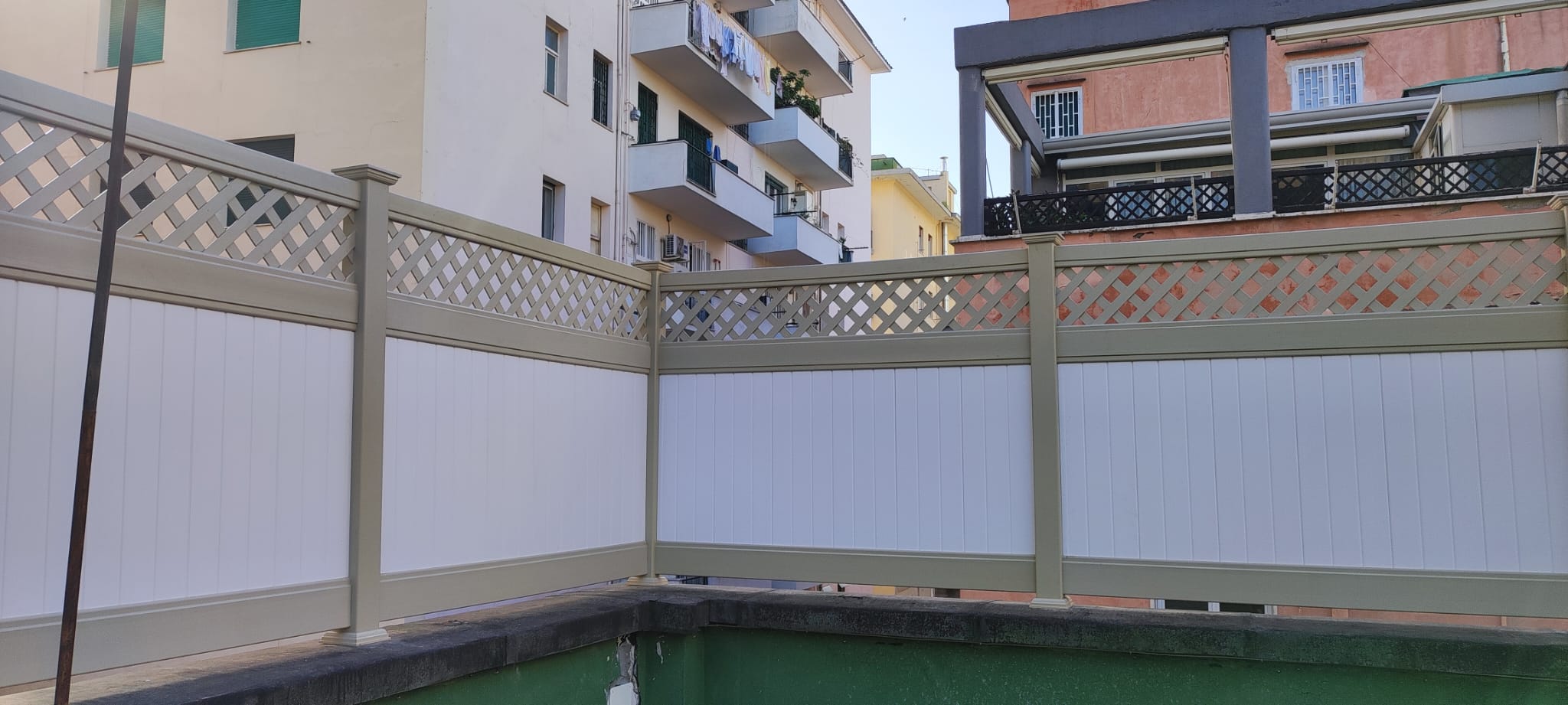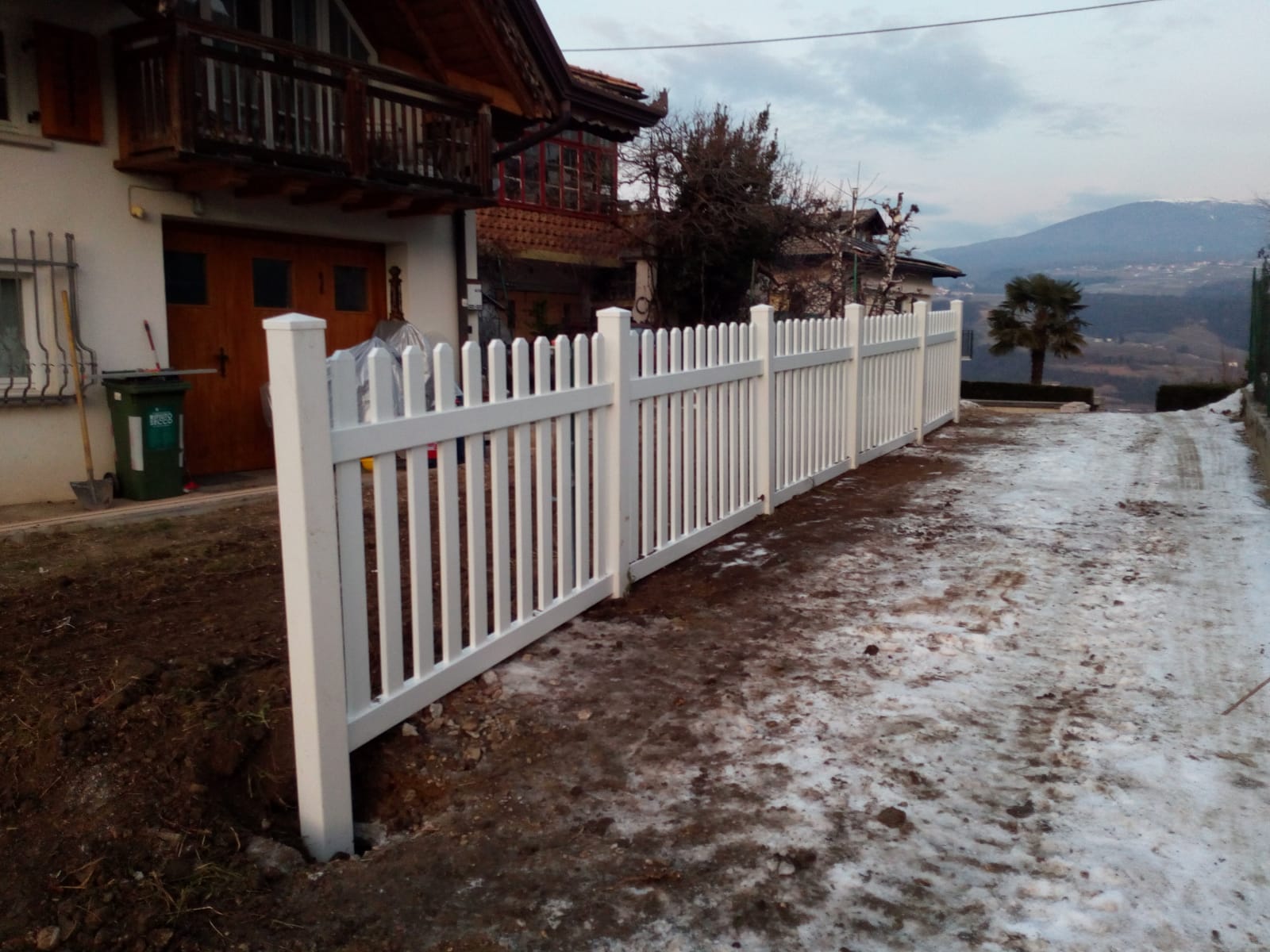The decline of wrought iron: when and why it loses its appeal
Once a symbol of timeless elegance, wrought iron in the garden is now beginning to show signs of age—and change.When wrought iron was king of the neighborhood
There was a time when, if you wanted to impress the neighborhood, all you needed was a beautiful wrought iron railing. Do you remember those houses with handcrafted fences, full of curves, stylized leaves, and scrolls that looked like something out of a movie? In the 1970s and 1980s, having an iron fence was almost a status symbol: heavy, expensive, “serious.” Maybe you still have it there, in front of your house, as a reminder of the days when your father used to say, “Something done well lasts a lifetime.” And indeed, iron can last a very long time… but only if you pamper it, sand it down, and repaint it every two or three years. Because the truth is this: wrought iron is beautiful when it is perfect, but it becomes a nightmare as soon as it starts to deteriorate. And you know that very well. Maybe you woke up one winter morning, looked outside, and… surprise! An orange spot was staring at you from the gate. There it is: rust, silent and relentless, transforming the poetry of iron into a silent (and costly) tragedy.Rust: the invisible enemy that shows no mercy
Wrought iron is not only prone to rust—rust is an integral part of its existence, whether we like it or not. And no matter how hard you try to treat it with rust remover, paint, and elbow grease, it always comes back, angrier than before. The problem is that often, by the time you notice the damage, it’s already too late: corrosion has started to “eat away” from the inside. And no, it’s not just a matter of aesthetics. A rusty fence can become dangerous, fragile, sharp, and even unstable if the support posts are compromised. Not to mention the time you waste each time: first you have to remove the old paint, then treat the surface, then repaint. If you have a 20-meter-long house, you’ll waste entire days dealing with dust, solvents, and a lot of patience. And we know it well: you want to use the weekend to relax, not to improvise as a locksmith in your driveway.When aesthetics cease to be “classic” and become “dated”
Let’s add another uncomfortable truth: wrought iron, especially if it is old and discolored, no longer has the “wow” effect it once did. In fact, it risks making the whole house look old, even if you have just renovated the façade, fixtures, or garden. You know that feeling of “grandparents’ house” even though you’ve spent a fortune modernizing everything else? Blame it on the fence. Maybe the iron is still there, solid, but it no longer matches your new style, with its soft colors and natural materials. It does not compare favorably with the more linear, clean, and “smart” solutions seen today in renovated houses. Yet you continue to keep it there, out of habit, or because it seems wasteful to change it.v But with each passing day, it seems a little more out of place, and no longer reflects your home or your taste.PVC: the turning point without regrets (spoiler: it’s not discount plastic)
You may be thinking, “Okay, iron is no longer the best option, but what can replace it?” The answer, if you haven’t explored it yet, is PVC. But wait: we’re not talking about cheap, white, plastic PVC that breaks when kicked by a soccer ball. Today, there are rigid PVC panels designed specifically for renovations like yours: with wood-effect textures, matte colors, and elegant finishes. They are designed to last for decades without rusting, are resistant to sun, rain, and frost, and do not change color over time. And above all: you never have to repaint them. Never. A quick wipe with a sponge or pressure washer and they’ll be as good as new, even after a scorching summer or snowy winter. And do you know what’s even more interesting? Many panels are modular, easy to install even on existing supports, such as old walls or poles that are still in good condition. You’re not throwing everything away: you’re making a smart upgrade.The revenge of modern materials: from PVC to composite
Forget iron: today’s modern materials are both attractive and smart
There was a time when choosing plastic materials for the exterior of a house seemed like a bit of a “beginner’s” choice. They used to tell you they were cheap, not very durable, not very elegant… and you might even have believed it, because those old white panels really were quite sad. But today, things have changed quite a lot. Next-generation PVC and composite materials are making their triumphant entrance into the gardens of those renovating with style and intelligence. And do you know why? Because they are no longer a fallback option, but a conscious choice made by those who want results that are lasting, beautiful, and low-maintenance. If you’re refurbishing the fence of a slightly older villa, perhaps the one where you’ve already worked on the windows, façade, driveway… then it’s time to take a serious look at the materials of the future. Spoiler: not everything that shines is “plastic.”PVC: the king of practicality that doesn’t want to look cheap
Let’s start with him, the most famous of the new materials: rigid PVC, the star of many modern fences. If you still think of PVC as something ugly, white, and fragile, you need to update the image in your mind. Today, PVC panels come in wood-effect, stone gray, anthracite, or sand finishes, with textures that look real. You can touch them and hardly believe they aren’t real wood. And do you know the best part? They don’t fade in the sun, absorb moisture, rot, or rust. Unlike wood or iron, you no longer have to spend your Sundays sanding, repainting, or praying they don’t crack. You install them and then forget about them — in the best sense of the term. And if you’re handy with DIY, you can even install them yourself, with the right supports and easy-to-follow instructions. Otherwise, even a professional will take much less time compared to more challenging materials. Moreover, PVC is completely waterproof, so you can rest easy even if you live in areas with frequent rain, snow, or constant humidity. Yes, even in those gardens where weeds grow like in the Amazon jungle.Composite material: the elegance of wood, the strength of technology
If PVC already seems like a big step forward, wait until you meet its more sophisticated cousin: composite material. We’re talking about a technological blend of wood fibers and plastic resins, designed to combine the warmth of natural wood with the durability of synthetic materials. The result? A beautiful, elegant material with an authentic look and a pleasant feel, yet it doesn’t swell, crack, or fear the weather or insects. Perfect for those who want a more premium aesthetic, especially in settings where design is an integral part of the renovation project. Have you renovated the façade with modern plaster? Chosen anthracite aluminum windows? Want a contemporary garden? Then composite material fits perfectly with the entire setting. The price is higher than plain PVC, of course, but it makes up for it with incredible durability and superior aesthetic appeal. Moreover, many models are made with recycled and recyclable materials, so if you’re also concerned about environmental impact, it’s a perfect choice. A modern, practical material with a green conscience? Yes, it exists. And it’s waiting for you in the catalog, ready for your villa.It’s not just about aesthetics: it’s freedom, time, and savings.
When you choose materials like PVC or composite for your fence, you’re not just choosing a style—you’re choosing a new way of life. No more hours lost with brushes and anti-rust products, no more nights spent looking for someone to fix the gate smashed by the wind. With these modern materials, you gain freedom, time, and peace of mind. And even a few extra euros in the long run, because the initial cost is offset by the complete lack of maintenance. Want to go on vacation without worrying about what you’ll find when you return? Done. Want a garden that stays tidy, even after a week of rain? Done. Want to prevent your children from getting hurt on rusty spikes or rotting wooden boards? Done. These modern materials aren’t just functional: they’re solutions to problems you know all too well. And the best part is that today you can choose from dozens of styles, colors, and finishes, so your renovated villa will finally speak your language.Historic homes, new fences: blending classic and modern
You don’t need an antique fence to respect your home’s style.
You’ve just restored that old 1950s villa, inherited from your grandparents or bought after countless sacrifices.You’ve insulated the house, fixed the windows, refreshed the shutters… and now it’s time to tackle the fence. Here the doubts begin: “It needs to be classic, to match the architecture,” you think. “I can’t just choose something too modern!” Yet, I get it. You’d also like zero maintenance, a clean look, and maybe avoid repainting everything every two years. So you find yourself torn between two worlds: the vintage charm of the house and the desire for something practical, new, and durable. The good news is you don’t have to choose: you can have both. Today, thanks to materials like PVC or composite, you can blend classic and modern with style, without losing your home’s identity. All it takes is a bit of good taste, some inspiration, and the courage to think outside the box.
The trick is in the finish: wood-effect, stone, or neutral?
When it comes to modern fences, people often think of cool colors, sharp lines, and a “Nordic minimal” style at all costs. But if your house has a cream-colored façade, terracotta wall caps, and perhaps some decorative moldings… then you need something that respects that lived-in beauty, without trying to erase it. And this is where wood-effect PVC comes into play. This type of panel replicates the natural grain of wood, but without rotting, fading, or splintering. Perfect for maintaining a “warm,” welcoming look that harmonizes with tiled roofs, rustic walls, and classic-style ironwork. And if you prefer a more understated touch, you can choose neutral tones like sand, taupe, or stone gray, which suit both Art Nouveau villas and country houses. The key is to avoid stark white (too “’90s hospital”) and overly artificial colors that risk looking… let’s say, a bit “plasticky.” Go for matte textures, tactile finishes, and panels that look like real natural materials. Today, technology makes it possible!Contrast can enhance, if done with intelligence.
Many think that to respect a historic house, you must replicate the same style in every detail, including the fence. But sometimes the secret is to introduce a more modern element, creating an elegant contrast without clashing. You know those villas with a classic façade but a super tidy, modern garden? Or those courtyards with stone walls and squared fences in natural tones, which always look clean and contemporary? The trick is to choose a minimal yet warm design, simple but detailed: hidden screws, matte finishes, and light lines. An anthracite PVC panel, for example, can add character to a classic setting, especially when paired with a stone or brick wall. Or, if you want to “soften” a slightly severe look, a light or honey wood effect can visually lighten the fence. It’s precisely this mix of modern and traditional that works best in quality renovations today: visual coherence, yet boldness without fear.Modern fences that can be installed on existing structures
Another advantage of modern materials like PVC and composites? They adapt perfectly to existing structures. So, if you still have those old concrete or brick walls, it doesn’t necessarily mean you have to demolish everything. Often you can simply remove the old iron railing and install the modern panels directly onto the supports. This way you keep the “body” of the original fence, but give the perimeter of the house a completely new face. It’s a practical, smart, and context-respecting solution. And on top of that, you also save something on the work! Many PVC panels are modular, easy to cut and assemble, with rails, post covers, and profiles designed to fit non-standard sizes. Perfect for those with a historic house, where nothing is ever perfectly symmetrical or linear — and you know it well.Zero maintenance, zero problems: dream or reality?
Tired of brushes, rust, and surprises in the garden?
Come on, admit it. How many times have you said, “I’ll fix the fence this spring” and then didn’t? Maybe you bought the can of rust-proof paint, set aside Saturday afternoon, but then… it rained. Or the railing was too damaged, and the mere thought of starting made you lose interest. I understand perfectly, because iron always rusts at the worst moments, and wood gets damaged just when you have guests for dinner. And if you have a small villa, you know well that between hedges to trim, gutters to clean, and paths to fix, the fence is the last thing on your mind. Yet it’s the first thing you see when you arrive home. Wouldn’t it be nice to have a fence that doesn’t peel, fade, swell, or rust? One of those that you install once, and then forget about for the next twenty years? That’s why today more and more people choose modern materials like PVC and composite, which truly promise the famous “zero maintenance.” A dream? Maybe. But it’s also a reality you can see for yourself.Rigid PVC: as practical as the dream of a free Sunday.
Let’s talk about rigid PVC, the undisputed king of practicality in the garden and around the house perimeter. If you’re wondering, “does it really never get damaged?” the answer is almost always “yes, really.” Outdoor PVC panels are designed to withstand sun, rain, snow, and even salt. They don’t peel, fade, swell, or attract insects or mold. And maintenance? Practically zero. Just a wipe with a damp sponge, or a blast from a pressure washer when you clean the driveway. That’s it. No paint, no protective products, no wobbly ladders to reach the highest points. And you know what’s the most satisfying thing? Even after years, the fence still looks like new. No lighter or darker spots, no corners that make you embarrassed when someone passes by. It’s perfect for you who want to enjoy the garden, not live in it like a frustrated maintenance worker.And composite? Even more beautiful, with the same peace of mind.
If you want something that combines the beauty of wood with the practicality of plastic, then composite material is your ally. It’s made of natural fibers and resins, designed to be resistant, strong, durable, and… beautiful. Unlike wood, it doesn’t absorb water, swell, or crack in the cold, and it doesn’t need oil or paint. Here too, maintenance is nearly zero: no seasonal protection, no pest treatment, no surprises after winter. Plus, composite has an extra advantage: it looks like wood, but doesn’t behave like it. You touch it and it feels real, but then you remember you’ll never have to sand or protect anything again. Ideal if you’re redesigning the garden and want something aesthetically elegant, but that lets you live in peace.Time, money, and peace of mind: the real gains of zero maintenance.
It may seem like an exaggeration to talk about a “fence that changes your life,” but think about it carefully. Every spring, you won’t have to make a shopping list for paint, gloves, and toxic solvents.. Every time it rains, you won’t think, “I wonder how much the railing got damaged” or “I’ll check that squeaky part tomorrow.” Every euro you save on maintenance can be reinvested in more fun things: a new barbecue, beautiful plants, or an inflatable pool. The truth is that when you eliminate a recurring problem like fence maintenance, you free yourself from a constant worry. And no, you’re not lazy: you’re just tired of wasting time on things that should be simple. A PVC or composite fence lets you have a tidy, beautiful, and safe home without having to work on it every year. It’s an initial investment, of course, but one that pays you back in time, peace of mind, and even style.







Leave A Comment